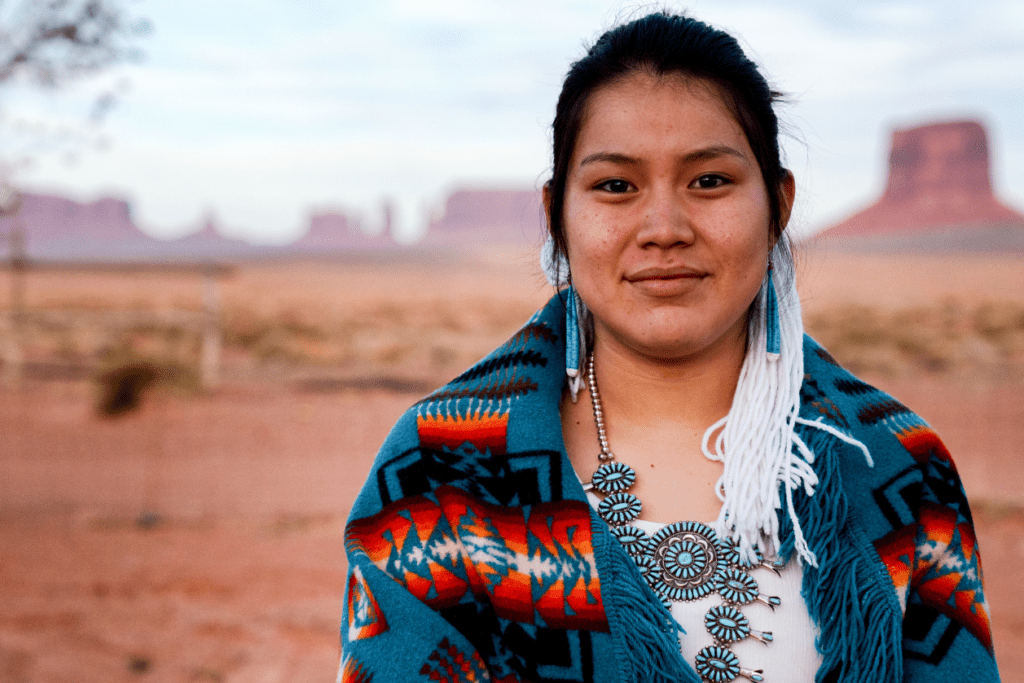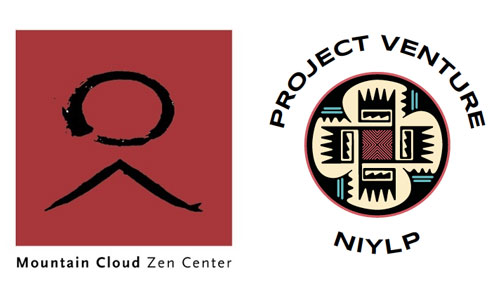
For thousands of years, Indigenous cultures in America have engaged in sacred ceremonies and practices—singing, dancing, beadwork, prayer, basketmaking, drumming, running, and more—that nurture present moment awareness and a felt sense of interconnection.
How can such practices be integrated into efforts to support the mental health and well-being of Native American youth today? With support from a Mind & Life Contemplative Changemaking Grant, the Rio Grande Mindfulness Institute (RGMI), a division of Mountain Cloud Zen Center, seeks to find out.
Through the Mindfulness Practices for Indigenous Youth project, RGMI and its partner, Project Venture, aim to integrate culturally responsive mindfulness practices into school-based and outdoor education activities benefiting Native youth in northern New Mexico.
“We need to find ways to honor the deep contemplative traditions that already exist in Indigenous cultures to help today’s youth better navigate challenges related to identity, coming of age, school, health, colonization, and decolonization,” says RGMI Co-director John Braman.
“We need to find ways to honor the deep contemplative traditions
that already exist in Indigenous cultures…“
The isolation imposed by the Covid-19 pandemic only exacerbated disparities experienced by Indigenous youth in New Mexico, who suffer wide ranging effects from historic and contemporary trauma, with over 40 percent living in poverty.
“Native kids were coming out of the Covid pandemic with even more problems than they had before,” says Project Venture Founder McClellan “Mac” Hall. Mac, who is of Cherokee descent, traces his own mindfulness journey back fifty years to when he first embraced transcendental meditation. He discovered the benefits were many, including improved ability to regulate emotion and handle stress.
Partnering on a youth mindfulness initiative emerged as a natural next step in Mac’s lifelong work to support Native youth—first as a teacher and principal at tribal schools and later as founder and director of Project Venture, an evidence-based, positive youth development program tailored to Indigenous youth. Mac came to realize that through its careful braiding of Native teachings, outdoor adventure, and social-emotional learning, Project Venture already included core mindfulness elements that could be built upon.
With Native American youth committing suicide at 2.5 times the national average, John and Mac conceived of the Mindfulness Practices for Indigenous Youth project as a locally-rooted approach with the potential to be expanded to other Native communities. Through combining elements of Western mindfulness with Indigenous practices, they sought to reconnect Native youth to their cultures and time-honored ways of being long suppressed by colonization. The question was how?
As a first step, they formed a nine-member Council of Elders that includes Indigenous elders representing different tribal cultures—Tewa, Apache, Oglala Lakota—with expertise in psychology, mindfulness meditation, education, and group facilitation. The group is advising the development of trauma-informed mindfulness practices grounded in Native epistemologies.
Committee members meet every six weeks with remote participants joining via Zoom. Among their recommendations has been the integration of storytelling elements and Native language into proposed mindfulness practices. For example, a body scan exercise might use Native language to refer to various body parts. Members have also emphasized the importance of fully engaging participant’s senses and incorporating spiritual elements, such as connecting with one’s ancestors and the spirit of the land and nature. Other considerations, such as the emphasis on qualitative evaluation within Indigenous communities, are also under discussion.
Once the development of several core mindfulness practices is complete, RGMI will train Project Venture experiential educators—together with high school-aged peer mentors—to pilot mindfulness sessions with Indigenous youth this summer at a weeklong camp held in a wilderness location. Feedback from facilitators and participating youth will be used to refine project activities.
As the 2024 school year gets underway, the same trained educators and peer mentors will integrate the practices into Project Venture’s activities for students in grades 6-12. Up to 390 students attending 3 charter schools in Albuquerque and Gallup, NM are expected to participate, with RGMI providing ongoing support and training as needed.
As important as reaching youth will be ensuring that Project Venture staff—a majority of whom are Native American—are able to benefit themselves from their immersion in culturally affirming mindfulness practices. “The work we do is stressful,” says Mac. “A whole area of concern is the mental health of our staff.”
Ultimately the goal is to extend the mindfulness practices to all sites served by Project Venture, including schools on the Navajo Nation in Arizona and the Oglala Lakota Pine Ridge Reservation in South Dakota.
John sees the project as an idea ‘whose time has come.’ Just last October, RGMI hosted a summit organized by Jeffrey Proulx, Assistant Professor of Behavior and Social Sciences at Brown University, that brought together 30 mindfulness researchers and practitioners from Indigenous communities in the U.S. and Canada. Participants—including John and Mac—shared their experiences and goals when it comes to incorporating Indigenous traditions into mindfulness practices. The gathering brought together partners of the Indigenous Mindfulness Coalition, which will continue to catalyze community-led efforts.
“It’s friendships that got us here,” says John of the kinship relationships that are helping to spawn a movement aimed at integrating Native American wisdom and science to foster deep healing and the revitalization of contemplative practices.
Suggested Resources:
- Learn more about Mind & Life’s Contemplative Changemaking Grants.
- Listen to an interview with Jeffrey Proulx and John Braman about the origin and goals of the Indigenous Mindfulness Coalition.
- Read about the Power of Nature-based Contemplative Practices for Inner Peace and Collective Well-being
- Find out more about efforts to bring Indigenous ways of knowing into conversation with Western approaches in a Mind & Life podcast interview with contemplative scholar and Indigenous activist Yuria Celidwen.
- Learn why we need contemplative practices that engage everyone in upholding Nature’s law of interdependence in a Mind & Life Insights essay by Dekila Chungyalpa, Director of the Loka Initiative.


